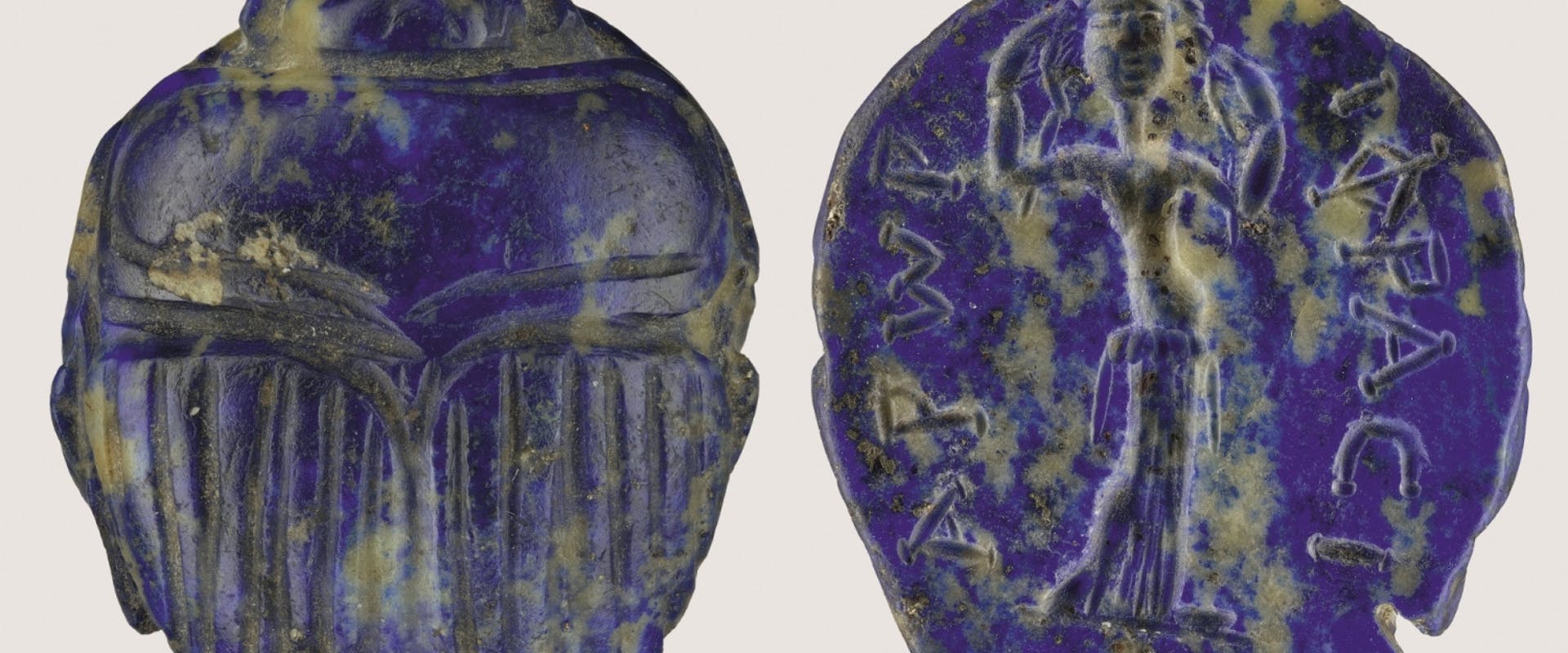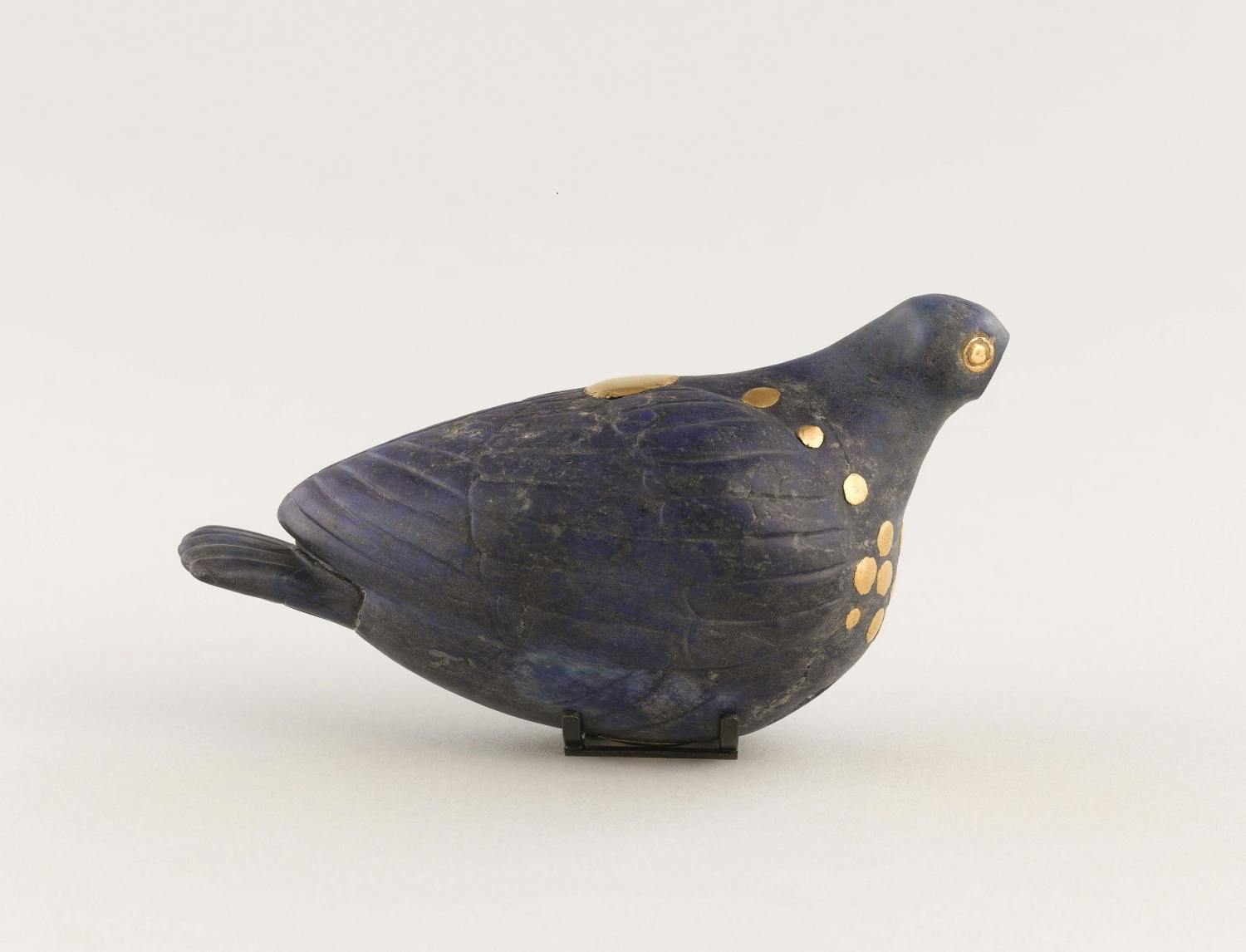Lapis lazuli. The magic of Blue
An extraordinary collection of engraved lapis lazuli vases with astonishing shapes inspired by the artists of Florentine Mannerism.
The rare and precious blue stone, which seemed to contain golden veins and evoked the sparkling sea and the starry night sky, came from the far East. It was extracted from the quarries of Sar-e-Sang, in the mountains of Badakhshan (now Afghanistan), the only known deposit in the ancient world, and was a symbol of wealth, along with gold, silver and other precious metals.
The idea of dedicating an exhibition to this stone, full of magical meanings, was offered to us by Gian Carlo Parodi, a mineralogist at the Mùseum National d'Histoire Naturelle in Paris. Therefore, the exhibition is aimed not only at an in-depth study of exquisite artistic artefacts but also - and not to a lesser extent - at the more purely mineralogical aspect of such precious stone. These topics complement each other, allowing for unique and unusual approaches to art history. The Natural History Museum of the University of Florence, directed by Giovanni Pratesi, played a leading role in developing the project and a section of the exhibition dedicated to the stone and its scientific research aspects, which was set up in the Specola Museum.
In the Silver Museum, the exhibition is divided into four sections.
From Nature to Artifice, the first section presents a selection of lapis lazuli samples of various formations and provenance sourced from the most prestigious museums in Europe. These are compared with the greatest achievements in the use of lapis lazuli in vases and cups, flasks and vessels, initially intended for the princely courts of the Renaissance.
The second section, Semi-Precious Inlay Stone and Painted Stone, recounts the evolution of the use of lapis lazuli in the early 17th century in two spheres, that of inlay and that of painting on lapis lazuli, animated by the same desire to immortalise and capture nature in the immutable colours of the stone, through inlays with simple geometric motifs and more complicated designs.
The third section, The Blue Stone in Princely Splendour, shows how, when lapis lazuli became increasingly rare, the stone was almost exclusively destined for profane objects and sacred ornaments of great artistic value and very high patronage.
The fourth section, From Ultramarine Blue to Klein Blue, is dedicated to the pigment and use of lapis lazuli in art. The deep blue of lapis lazuli was sought after for its very high cost and the underlying meanings of the colour 'blue', expressed in the hue of the mantle of the Madonnas and the starry skies of 14th and 15th-century frescoes.
We could not close the exhibition without mentioning the experiments to find materials that could replace the precious stone and create a pigment that could match the intensity of ultramarine blue. Therefore, it seemed appropriate to conclude the exhibition with a work by Yves Klein - who dedicated the artistic research of his entire, albeit brief, life to the colour blue - and with a small section of 20th century and contemporary jewellery.
The exhibition, like the catalogue published by Sillabe, is curated by Maria Sframeli, Valentina Conticelli, Riccardo Gennaioli and Giancarlo Parodi and is promoted by the Ministry of Cultural Heritage and Activities and Tourism with the Regional Secretariat of the Ministry of Cultural Heritage and Activities and Tourism of Tuscany, the former Special Superintendence for the Historical, Artistic and Ethno-anthropological Heritage and for the Polo Museale of the City of Florence, the Silver Museum of the Pitti Palace, the Museum of Natural History of the University of Florence La Specola, the Muséum National d'Histoire Naturelle of Paris and Firenze Musei.

